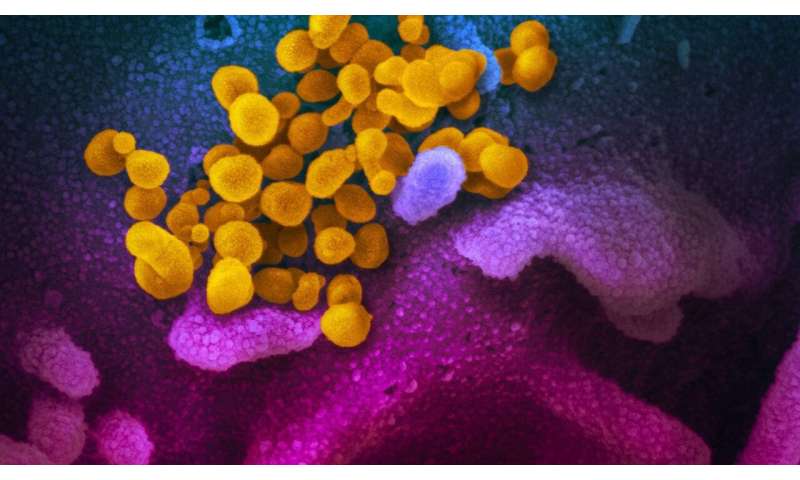
This week, the National Institutes of Health announced that Kaiser Permanente has begun the first clinical trial of a COVID-19 vaccine, called mRNA-1273. Scientists estimate that it will take at least one year to make a COVID-19 vaccine available to the general public.
To understand the steps required to develop, test, and produce a COVID-19 vaccine, Sarah LaFave, a Ph.D. candidate at the Johns Hopkins School of Nursing, spoke with Ruth Karron, a professor in the Department of International Health at the Bloomberg School of Public Health. Karron is the founding director of the Johns Hopkins Vaccine Initiative and director of the Center for Immunization Research. Their conversation has been edited for length and clarity.
LaFave: Who is working on developing a COVID vaccine?
Karron: There are a number of groups working on vaccines—in academia, in biotech, in pharma. The developers are using new technologies which allow for rapid development, but we also aren’t sure yet how those new technologies will work. That’s why it’s important that we have multiple groups working on developing multiple vaccines.
How far along are scientists toward having a COVID vaccine?
The first COVID vaccine was developed just four weeks after the first genetic sequence was available from China. The reason that was possible was in part because of investment by the Coalition for Epidemic Preparedness and Innovation. CEPI is a global partnership set up three years ago, specifically with a mission “to stimulate and accelerate the development of vaccines against emerging infectious diseases and enable access to these vaccines for people during outbreaks.” One of the things they have focused on is preparing for “Disease X,” meaning some disease that would exist in the future which we didn’t yet know about and for which we didn’t yet have a vaccine. CEPI was founded to support the development of technology platforms that—no matter what the pathogen—could be used for rapid vaccine development. These technologies allow you to go from genetic sequence to vaccine without having to isolate the germ. COVID-19 is Disease X.
We’re hearing about both a COVID vaccine and COVID antivirals. What’s the difference and when do you think we will see a COVID vaccine or antiviral available to the general public?
That’s really difficult to project. We will likely know if we have a vaccine within six to nine months but then the challenge will be to scale up production. Developing and testing a vaccine is different from developing, say, an antiviral which you would use to treat someone who has an infection. If you are giving an antiviral in a treatment trial for someone with COVID, you reach the endpoint very quickly—you look at the outcome for that patient immediately. But with a vaccine, you don’t reach the endpoint immediately because you have to observe immune response over time, and for an efficacy study, have enough people naturally exposed to the virus to determine whether the vaccine prevents disease. That’s why you will likely hear about results from COVID treatment studies before you will hear about results from COVID vaccine studies. There are also data coming out that suggest that different strains of COVID might exist. We don’t yet know the biologic relevance of that, but it will be important to find out whether the vaccines and the antivirals are equally effective against all strains.
What are the key steps for bringing a vaccine to market?
First there’s the creation of the vaccine itself. Often, the vaccine is next evaluated in animals, depending on the vaccine and the particular disease. Then, under oversight from regulators (the Food and Drug Administration in the U.S., and other regulatory bodies in other countries), institutional review boards (IRBs), and Data Safety and Monitoring Boards (DSMBs), the vaccine moves through phases of clinical testing, typically first in small numbers of healthy younger adults, and then in larger groups and broader age ranges, often including people with underlying conditions. The CDC has a useful brief guide to the phases of vaccine testing online.
Once a vaccine is shown to be safe and effective, bringing a vaccine to market is a complex effort that requires investment in manufacturing and distribution. In the coming months, we and others around the world will need to be thinking and acting to ensure that adequate investments are made, and will need to continue to collect and review data to determine who should be vaccinated, and when. You’ll probably remember that with the 2009 flu pandemic, we didn’t have enough vaccine available for everyone at once, so we prioritized vaccination based on risk. And of course this is a global disease—so we need to be thinking about issues of global equity and justice as we consider vaccine supply.
Is there a fast-track that can be taken during situations like the one we’re in now?
We have fast-tracked vaccine development—getting from pathogen sequence to vaccine products available for clinical trials in a matter of weeks is a truly remarkable accomplishment. However, there are aspects of the trials that just can’t be rushed. It takes time to develop an immune response to the vaccine, and it also takes time to evaluate the safety of these vaccines.
With that said, in an emergency situation, some stages of vaccine testing can be streamlined. How quickly you progress through the stages of vaccine evaluation will be influenced by the urgency of the problem. In the context of a pandemic, I know that we will move forward as safely and quickly as possible.
What is the most important thing for the general public to know about COVID vaccine development?
Vaccines are critical to halt the coronavirus pandemic—but they are not an overnight solution.
I also think it’s important for people to understand that without investment in vaccine epidemic preparedness and technology, the rapid development of vaccines using novel platforms that is now underway wouldn’t have been possible.
Source: Read Full Article